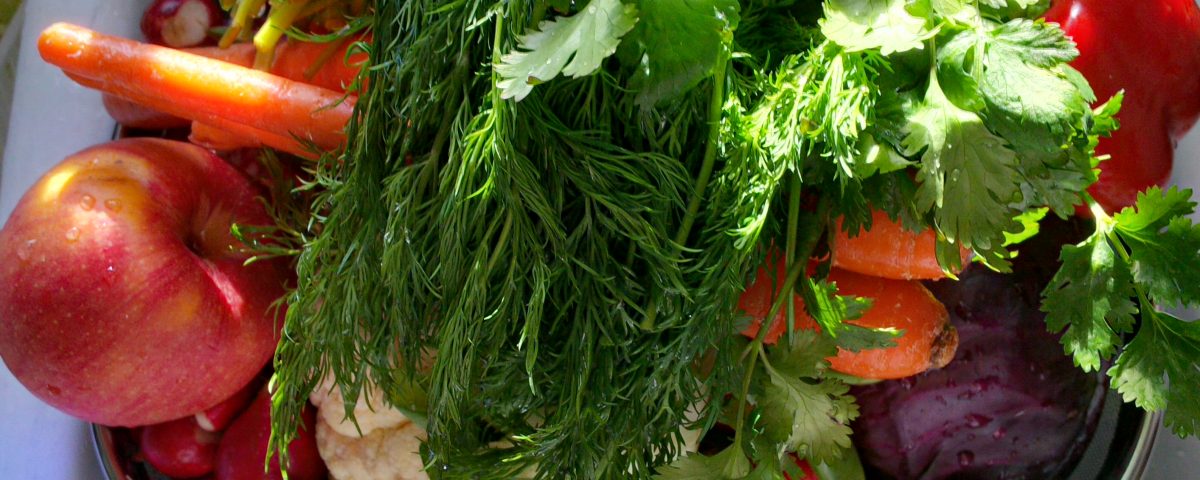Our goal sounds simple: to provide proper nutrition for captive parrots. We’ve already covered why we don’t view manufactured pellets as an option. But how else can we provide “complete nutrition”?
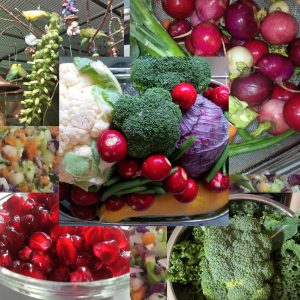
Before we can answer this question, we must have a solid understanding of what defines “complete nutrition” as it applies to parrots. Do the pellet manufacturers have some magical formula that is perfect for every parrot, across a broad range of over 350 species? Of course not. Do they offer a pellet type specific to each species? Of course not. So where do we go for information on what makes a “complete” diet? To nature, of course.
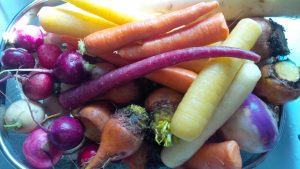
Parrots in the wild eat different things depending on their location, species and season. Can we provide a diet that corresponds with what they eat in the wild? It would be very difficult, because few species have been observed in the wild for enough data to be collected to give us a complete picture of every item they might have been consuming.
Common sense leads us to examine the physiological needs of parrots and feed a wide variety of fresh and seasonal foods in order to provide the broadest spectrum of nutrients. A “variety” means not just more than one vegetable, but different types of foods. This includes sprouted foods and micro-greens.
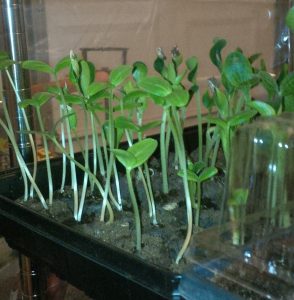
Micro-greens are bigger than sprouts and have leaves.
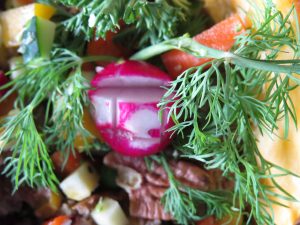
An attractive food bowl is appealing to parrots.
The term “taste the rainbow” may be a catchy marketing slogan for an unhealthy, artificially colored candy, but the term “EAT the rainbow” is a recipe for health. Why? Because many of the substances we call nutrients give the foods their colors, as well.
The natural compounds that color foods in hues of deep blue, dark red, purple or even black are anthocyanins, pigments that are antioxidants that, along with other nutrients, offer a wide range of health benefits. Anthocyanins and anthocyanin-rich extracts in cell culture and in animals have been proven to have anticarcinogenic (anti-cancer) activity, as well as benefitting vision, the cardiovascular system and the brain.

Blackberries, with their deep hues of dark purples and reds, are rich in anthocyanins.
Beta carotenes are bright yellow, orange and red pigments that offer multiple health benefits. They support vision, growth and development, and immune system function. Some foods that are rich in beta carotenes include carrots, papaya, and the red oil palm fruits. There are approximately 40 carotenoids that are Vitamin A precursors, meaning through normal biological processes the are converted by the body into retinol – aka Vitamin A. Deficiencies of vitamin A seem to be a bit common in parrots, so it’s important to make sure your parrot is getting enough of this essential nutrient.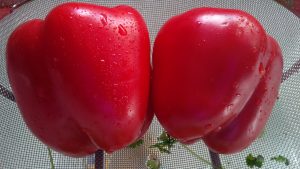
“White” vegetables such as cauliflower, turnips, kohlrabi, parsnips and corn, are often overlooked in the search for the dietary rainbow, however they all bring their own nutritional punch to the table. Cauliflower contains vitamin C, vitamin K, folate, pantothenic acid, vitamin B6, and choline in significant amounts. Corn contains pantothenic acid, phosphorus, and vitamins B3 and B6. Corn also provides two carotenoids: lutein and zeaxanthin. 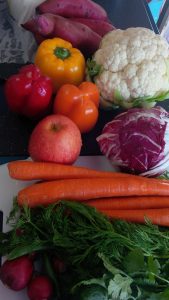
Dark green vegetables such as spinach. kale and parsley are high in Vitamins A, C, E and K. Broccoli, bok choy and mustard greens are high in B vitamins as well. Dark leafy green vegetables also contain carotenoids, iron, magnesium, potassium and calcium.
So you can see how providing a wide spectrum of variety in your parrot’s diet will provide the nutrients they need. It’s very important to realize this is a huge commitment in both time and expense. If you cannot afford either, then spend the time to research formulated diets. Don’t believe most of the spin put out by the companies that make them. Read ingredient labels. Look up all words that you aren’t able to identify. Know what you are putting in your bird’s body.
Avoid any food that contains menadione. As mentioned in a previous article, this is a synthetic analog of Vitamin K, and is proven to be cytotoxic (cell-killing) to liver cells. It’s banned in human food, so we don’t feed anything that contains this chemical here.
We also avoid artificial food colorants. While side effects are a topic of debate, we feel it’s best to avoid them as they aren’t beneficial in any way other than altering the appearance of the food. There are plenty of healthy ways to do that. Natural foods come with their own colors, as described above.
Avoid foods with processed sugars. Sugar itself isn’t the devil when it’s at naturally occurring levels. But if a food has lots of added sugar to make it more appealing, chances are it’s not healthy to begin with. This is true of human food but also our companions’ diets as well.
